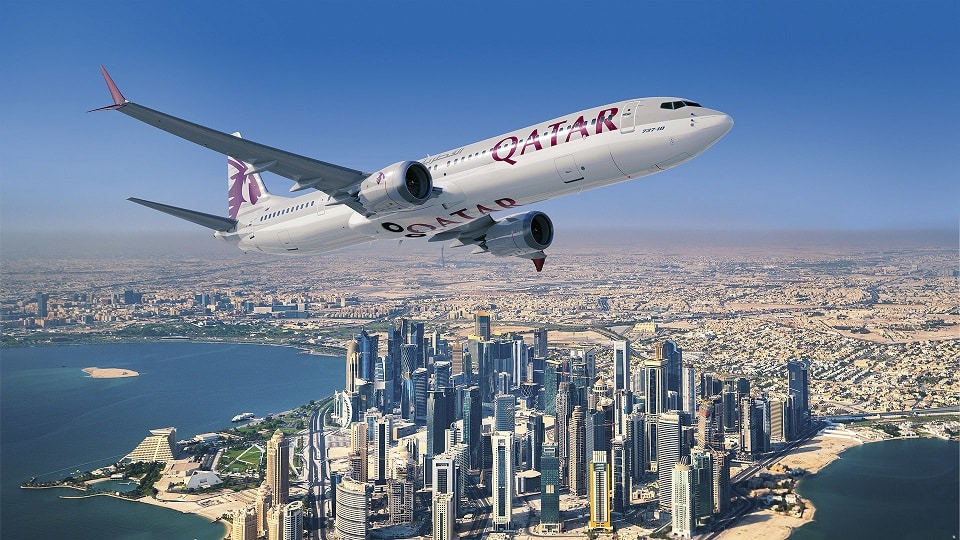Aviation
Qatar Airways reconfirms and upsizes its order for 50 A321neo ACF

Toulouse, 7th December 2017 – Qatar Airways has re-affirmed its earlier order for 50 A320neo with a firm order for 50 A321neo ACF (Airbus Cabin Flex configuration). The selection of the largest member of Airbus’ single Family reflects the airline’s need for efficiency and additional capacity. This updated order replaces the original one placed in 2011.
Joining Qatar Airways’ fleet of 50 A320ceo from 2019 onwards, the A321neo ACF will support the continuous development of Qatar Airways’ network ’leveraging from the A321neo range capability and the unprecedented customer experience. The total value of the deal is at $6.35 billion at list prices.
Qatar Airways Group Chief Executive, His Excellency Mr. Akbar Al Baker, said: “At a time when Qatar Airways is experiencing unprecedented growth and expansion the need for efficient, reliable and modern aircraft has never been greater. To answer our need for growth and additional capacity, the A321neo ACF is a world-class choice for our passengers and for our business. Qatar Airways is the fastest growing airline in the world and with this aircraft we will operate the youngest fleet whilst delivering unprecedented comfort and services to our customers.”
The A321 is the largest member of the A320 Family, seating up to 240 passengers.Incorporating the latest engines, aerodynamic advances, and cabin innovations, the A321neo offers a significant reduction in fuel consumption of at least 15 percent per seat from day one and 20 percent by 2020.

Aviation
Boeing, Antonov to Collaborate on Defense Projects

– MOU represents Boeing’s commitment to work with Ukrainian industry
– Includes exploring opportunities for collaborating on in-country support of Unmanned Aerial Systems
A Memorandum of Understanding was signed today by Boeing and Antonov Company to investigate potential collaboration on defense-related projects.
“We’re happy to keep collaborating with the Antonov Company to help Ukraine’s economic development and expansion,” stated Ted Colbert, CEO and president of Boeing Defence, Space, & Security.
Airbus and the Antonov An-225: The Best Partnership:Click here
“This agreement demonstrates our ongoing efforts to find more opportunities to work with Ukrainian industry, which was underscored by our signing of the Ukrainian Defence Industry Compact earlier this year.”
The areas of potential collaboration identified in the agreement consist of training, logistical support and overhaul services for tactical Unmanned Aerial Systems utilized by the Ukrainian Armed Forces, which includes the ScanEagle. In addition, the companies will also explore opportunities for Antonov to provide engineering support to Boeing.
The six largest cargo aircraft ever built in the aviation industry:Click here
“A strong, innovative, and efficient defense industry is key to sustainable economic development and national security, and we are extremely excited to collaborate with Boeing,” said Ievhen Gavrylov, CEO of Antonov Company.
This agreement brings a whole new level of opportunity to implement the latest and most effective solutions – in addition to the possibility of future projects with Boeing in the aerospace and defense industry.”
-

 Travel1 week ago
Travel1 week agoAir India to Expand US Operations with Three New Routes After a Decade
-

 Travel2 weeks ago
Travel2 weeks agoWhy We Should Avoid These Stamps in a Passport
-

 Airlines1 month ago
Airlines1 month agoInvestigations Reveal Fake Chinese Titanium in Boeing and Airbus Jets
-

 Tech4 weeks ago
Tech4 weeks agoChina’s CATL Plans 1,800-Mile Electric Plane Launch by 2027
-

 Airport3 days ago
Airport3 days agoTop 10 Largest Airports in the World by Size
-

 Aerospace4 weeks ago
Aerospace4 weeks agoChina’s Fighter Jets Turn Wings into Autonomous Drones
-

 Airlines4 days ago
Airlines4 days agoAir India Rolls Out A350s for Delhi-New York JFK and Newark Routes
-

 Defence3 weeks ago
Defence3 weeks agoBoeing Enhances Chinook with New Engines and Block II Upgrades at $96 Million







